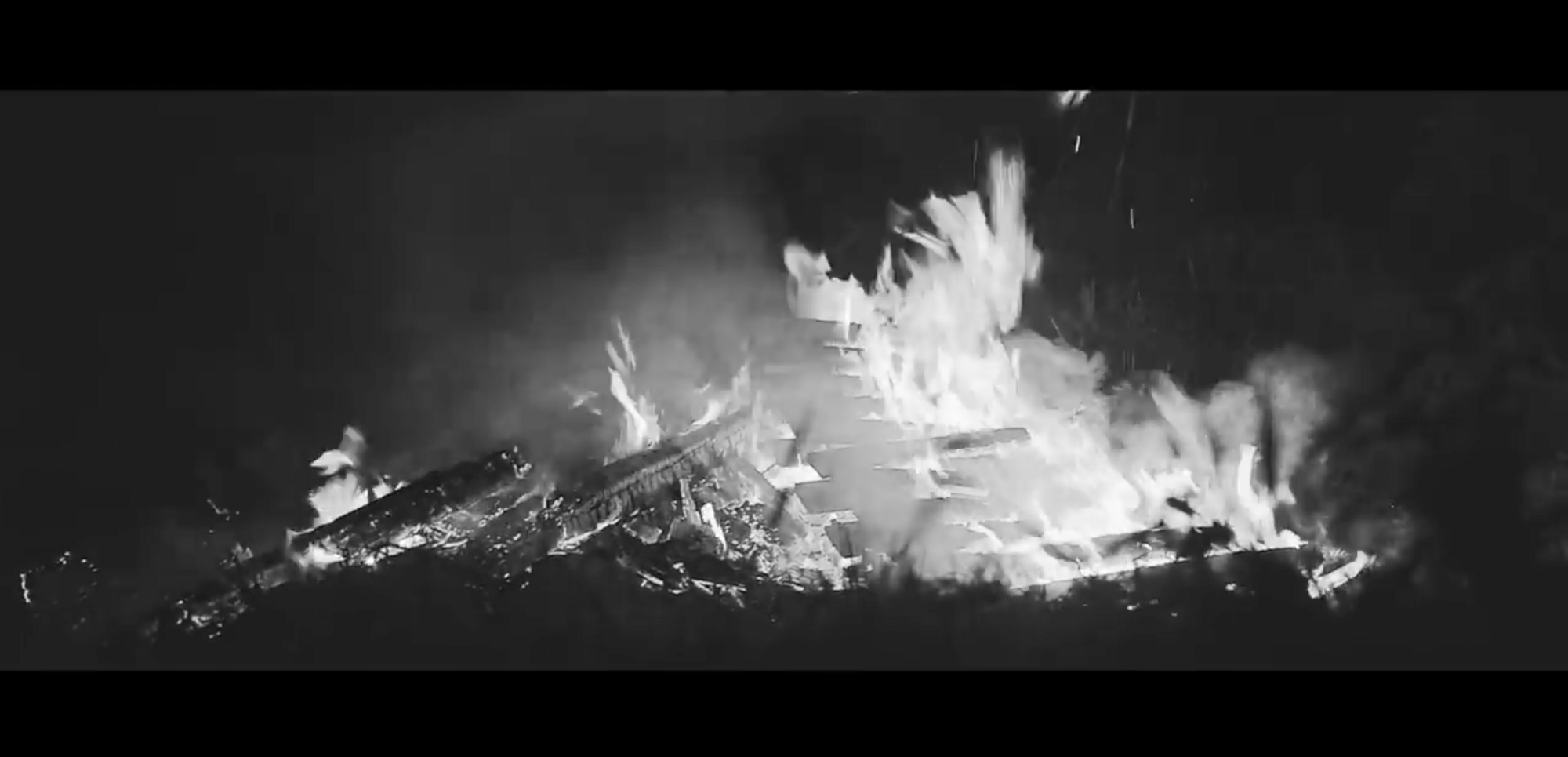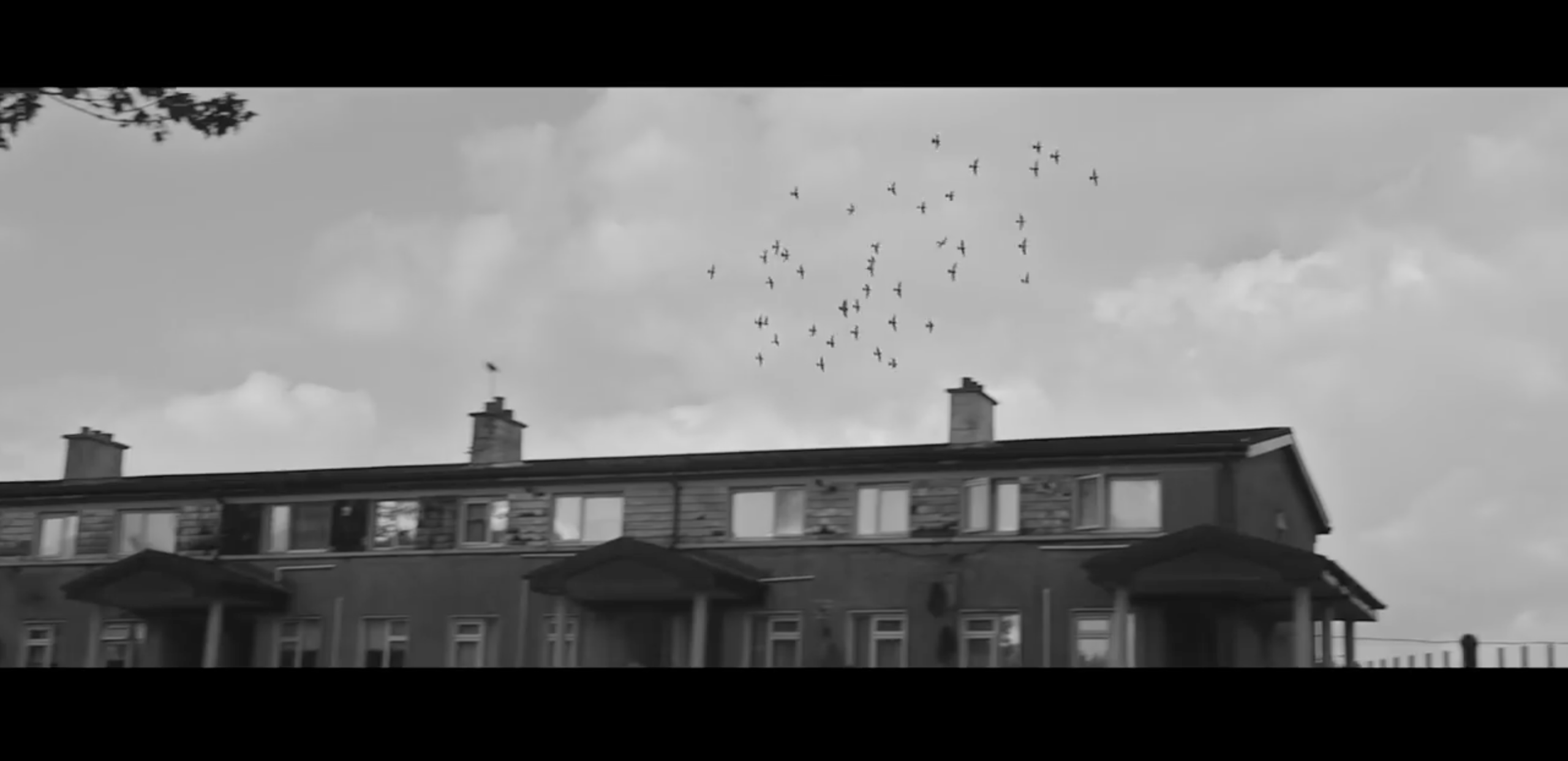Hozier?s Music Video: An Analysis
The music video for ?Take Me To Church,? a song by Hozier, features a narrative based on the Catholic Church?s discrimination against homosexuality. The purpose of this music video is to inform the audience of homosexuality and discrimination? an issue that is still unresolved in many parts of the world. The video follows conventions by addressing the controversial issue of attacks lead on homosexuals, and was filmed as a response to Russia?s antipathy towards homosexuality and gender variance.
Featuring scenes of strong violence that aren’t made explicitly visual ? cuts and close-ups don’t allow the audience a full view of the scenes ? the video encouraging the audience to identify the presence of violence, sympathise for the characters, and realise the wrongs of discriminating against freedom of sexuality. The music video doesn?t feature any artists singing or playing instruments, so therefore it isn?t a performance, however it offers an interpretive story for active audiences to analyse.
Stylistically edited in black and white, reflecting the tragic and downbeat visuals, the music video helps to establish the atmosphere of the song and may represent how some people see the world as black and white, plain and emotionless ? refusing to accept some ways of life, such as sexuality other than heterosexuality. The music video is cut to the beat, which helps fit the visuals to the pace of the song, and makes the music video as a whole more rhythmic and aesthetic. The pace of the editing and transitions is consistent throughout the music video, which may be a representation of how nothing seems to change when it comes to society accepting homosexuality and freedom of love.
The song is a has a slow pace ? conventional being part of the indie-rock genre of music. Due to the strong and emotional theme of homophobia, the song was used to stand up against discrimination in certain parts of the world, such as Russia and Ireland ? Hozier?s country of origin. This meant that the song was recognised and marketed both positively and negatively around the world; still, this advertisement helped to promote Hozier, and expanded his audience.

The opening shot of the music video is of a bonfire ? the audience will instantly recognise this as a sign ? the fire becomes a signifier, connoting danger and aggression, though potentially passion and/or power. It also foreshadows the dark turn that the narrative will take later on in the music video. A shot of a box being chained, padlocked and buried, which represents secrecy and mystery. It?s later revealed that the character that the box belongs to is homosexual, so therefore the box could represent the secrecy of his sexuality, and the character burying and locking away his feelings. The lighting in these opening shots is low-key and dim, which again, represents secrecy hidden in the shadows, and possible danger lurking. It may also represent the dreary emotions and struggle of the characters in the narrative.
The lighting throughout the music video is dreary, without any strong highlights, and often harsh shadows and silhouettes. The use of shadowing characters may represent the secrecy of their relationship, and the lack of highlights may be a hint to the sadness and dreariness caused by society?s discrimination. This point is backed up furthermore by the pathetic fallacy of the weather; throughout the music video the sky is clouded over, which often connotes sadness, blandness and sorrow. Towards the end of the music video, the lighting becomes dark as we transition to night time. This is linear to the dark turn that the narrative takes, and will make the audience feel more tense due to the connotations of darkness ? secrecy, danger and mystery.

Early in the music video, there?s a wide/establishing shot of a flock of birds, soaring above rooftops towards the clouds. This may represent the freedom the birds have, to go and do as they please, whereas the two main characters in the music video are stuck in the world of judgement and discrimination. This juxtaposition will draw audiences to sympathise for the two characters, and they?ll also be intrigued, and want to know how the narrative unfolds. The clouded sky might represent the birds soaring above the sorrow, into the bright blue sky above and beyond. Furthermore, the birds could represent the two main characters, who ignore the discrimination against homosexuality, and they express their love for each other. The dreary, dark lighting makes this shot appear mysterious and lifeless, reflecting the lives of the two main characters. In addition, the dark lighting is also a common convention of the rock genre that Hozier?s song fits into. A low shot is used, looking up at the sky, and the camera pans from left to right ? this allows us to establish more of the setting, and follow the flock of birds across the screen. Overall, the representation theory is applied extensively in this scene; active audiences are drawn to read between the lines, and interpret the visuals as signs of the characters tormented lives.
A scene in the music video, which shows one of the main characters running down a street, uses a handheld camera technique. This helps to convey their urgency and stress. It also comparatively suggests that it?s raw, unplanned footage ? similarly to homemade videos ? which makes the scene more convincing and relatable for the audience, encouraging an emotional connection between the character and viewer. Additionally, the use of a cantered camera angle suggests confusion, which often disorientates the audience and creates a sense of unease and alarm.

The two protagonists? costumes are bland and unspecific, and weren?t chosen with the intention of standing out or grabbing the audiences? attention. This may be a dystopian insight as to how homosexuals react to discrimination? attempting not to stand out, to remain unnoticed. One of the main characters is wearing a beanie hat, a backpack, and has dishevelled facial hair. These are all features that represent him as a troublemaker, and erects ideas and representations such as a drug dealer or thief. The hat implies a need to hide his appearance, and the bag implies that the character has hidden possessions, like drugs. The unkempt facial hair represents the character as careless, unorganised and shady, although the narrative of the music video shows the character as a harmless and passionate man. This proves to the audience that society almost always applies stereotypes, and upon seeing this character presented in said way, he?s represented as a danger and a menace to society.
The scene of the main character being dragged against his will at night uses dark, shadowy lighting to convey danger, and keep the audience engaged with fear. One character holds a flaming torch; the fire becomes a sign for his anger and dangerous intentions, as well as the threat the kidnappers pose towards the protagonist being dragged. The group of kidnappers all have their hoods up and faces covered ? this costume choice shows that they all have something to hide ? making the audience feel wary of trusting them, and therefore sympathise further for the protagonist.

A wide shot is used to capture all of the actions within the scene ? the protagonist on the floor, and the size of the group dragging him ? which will increase the audience?s engagement and fear for the protagonist. The character positioning within this scene shows the group members standing up whilst the main character is on the floor; this positioning represents the two different levels of hierarchical power, and exaggerates the control and dominance that the group has in the scene. They appear to be holding him back, dragging him across the ground by his arms and shoulders. This restraint may connote the main character?s metaphorical struggle to express his love for the other main character, as parts of society discriminates against homosexuality.
The final shot of the music video shows one of the two main characters, standing in the foreground, facing away from the camera. He looks over at the group of people, kicking his partner on the ground by the fire. The shot is framed somewhere between a head and shoulder shot and an over the shoulder shot; this type of framing allows us to see the point of view of the protagonist in the foreground, but also look upon the scene as if we were standing behind him. The audience gets to observe the scene as if they were almost part of it, but they can?t do anything about it ? this encourages the audience to sympathise for the lovers.
The lighting used in the final scene creates strong silhouettes, the only source of light being the fire ? this represents the anguish and tension of the scene, and could also reflect that the group of people abusing the main character are the source of the darkness and hatred, and the bright white fire could represent the passion of the two lovers, and how it?s dying to burn brightly. The scene doesn?t have any lyrics as the song comes to an end, which might be a stylistic choice with the intention of making the audience focus on the visuals and action, and the message that the visuals of the scene convey. The editing used at the end of this scene brings the music video to an end abruptly. Instead of fading out, as a passive audience might expect, it cuts straight to black. This might be a technique used to represent the character?s hope of peace, acceptance and happiness, and how it is unexpectedly cut-off and suddenly comes to an end. Cutting to black is also a convention of many rock narrative videos to express the fast-paced, action packed atmosphere, but however isn?t common for indie genre music videos. This juxtaposition of genre conventions could be to show how it is a hybrid-genre music video.

The lyrics, which often seem unrelated and confusing, were written with deep and subtle meaning related to the music video’s narrative; homosexuality in Russia. “Growing up in Ireland, the church is always there ? the hypocrisy, the political cowardice. The video has the same theme ? an organisation that undermines humanity,? Hozier spoke to the media in Ireland when being interviewed about his lyrics ? the line, “I was born sick, but I love it. Command me to be well” was inspired by Elizabethan dramatist Fulke Greville’s 1554 poem ?Chorus Sacerdotum’, that speaks of mankind being “created sick, commanded to be sound”. Hozier wanted to draw the past into the music, to inform the audience of how long the discrimination against homosexuality has been around, in order to make the audience think about the tragedy and emotion referred to in the lyrics.
As a summary of my analysis, the music video and lyrics of ?Take Me To Church? addresses discrimination against sexuality through means of building an emotional connection with the two main characters, stripped-back by the lack of names, speech, and colour, creating a clear, simplified message. Hozier describes his piece of music and the video as being about ?asserting yourself and reclaiming your humanity through an act of love. Turning your back on the theoretical thing, something that?s not tangible, and choosing to worship or love something that is tangible and real ? something that can be experienced.?


